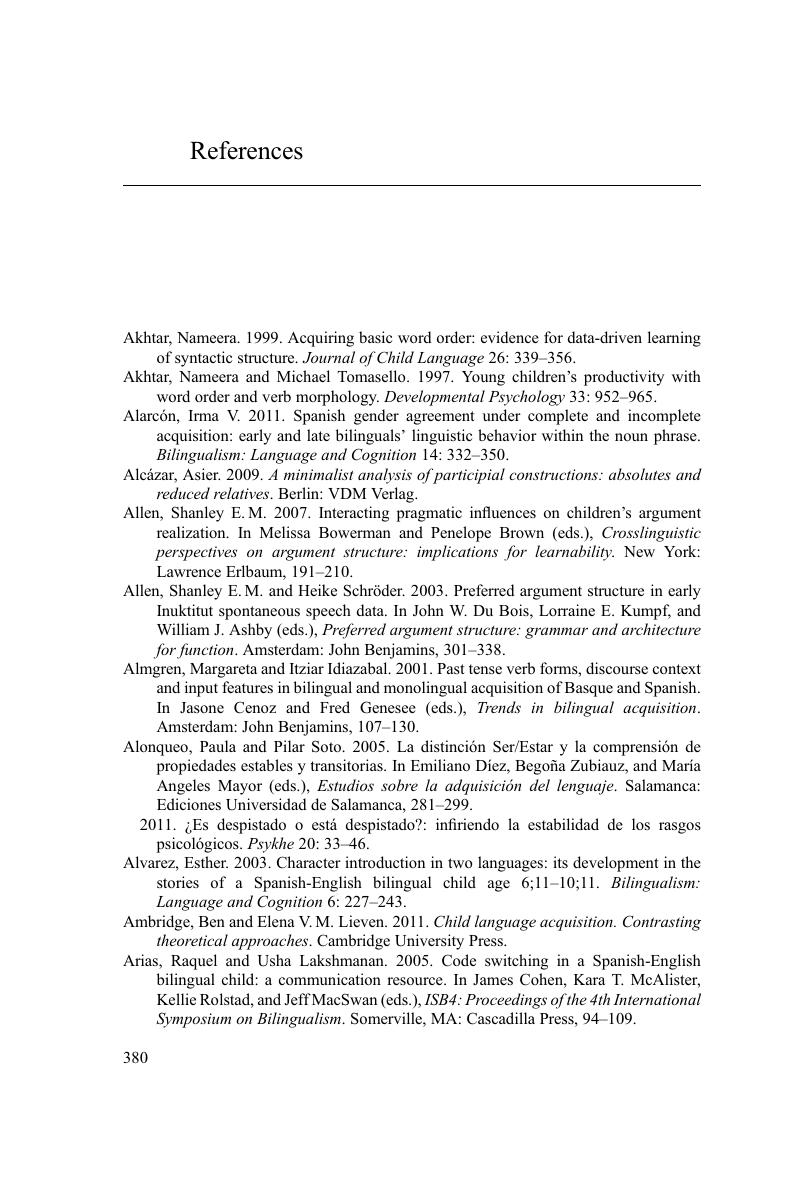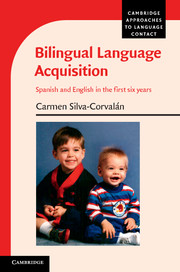Book contents
- Frontmatter
- Dedication
- Contents
- List of figures
- List of tables
- Series editor’s foreword
- Preface
- Acknowledgments
- List of abbreviations
- 1 Introduction
- 2 Methodology
- 3 Bilingual development
- 4 Subjects in English and Spanish
- 5 The order of constituents: subject position in English and Spanish
- 6 The acquisition of ser, estar, and be
- 7 The development of verb morphology
- 8 Discussion and conclusions
- Appendix 1 Transcription instructions
- Appendix 2 Calculation of MLUw
- Appendix 3 Spanish adjectives used with copulas up to age 6;0
- Appendix 4 The siblings’ early verb lexicon in English and Spanish
- Appendix 5 Excerpt from an adapted Goldilocks story
- References
- Index of authors
- General index
- References
References
Published online by Cambridge University Press: 18 December 2014
- Frontmatter
- Dedication
- Contents
- List of figures
- List of tables
- Series editor’s foreword
- Preface
- Acknowledgments
- List of abbreviations
- 1 Introduction
- 2 Methodology
- 3 Bilingual development
- 4 Subjects in English and Spanish
- 5 The order of constituents: subject position in English and Spanish
- 6 The acquisition of ser, estar, and be
- 7 The development of verb morphology
- 8 Discussion and conclusions
- Appendix 1 Transcription instructions
- Appendix 2 Calculation of MLUw
- Appendix 3 Spanish adjectives used with copulas up to age 6;0
- Appendix 4 The siblings’ early verb lexicon in English and Spanish
- Appendix 5 Excerpt from an adapted Goldilocks story
- References
- Index of authors
- General index
- References
Summary

Information
- Type
- Chapter
- Information
- Bilingual Language AcquisitionSpanish and English in the First Six Years, pp. 380 - 398Publisher: Cambridge University PressPrint publication year: 2014
